Famed for its glorious mountains and spiritual calm, Nepal also bears witness to historically significant landmarks tracing back to kings, civilizations, wars, and worship in its valleys and hills. These are not simply stone and mortar, but the lifeblood of ancient civilizations still alive today. Walking through the cobbled streets of ancient Kathmandu or the courtyards of Bhaktapur is like walking back into an era where every carving and brick has a story to tell. Let us explore the top Historical Landmarks of Nepal.
From splendid palaces to places of holy birth, Nepal’s monuments stand alive as chronicles of art, religion, and politics. They show how this little country has preserved its identity in spite of the push and pull of change and challenges over the centuries. These historical sites are ideal for anyone wanting to get an in-depth experience of the soul of Nepal.

Architecture, mythology, and vibrant living tradition are what make up Nepal’s historical sites. Most of these sites are not huge relics in history; instead, they serve and connect today through worship and community events-festivals, making them truly extraordinarily vibrant. While in some countries, history is behind glass in museums, in Nepal, it invites you to walk through, touch, and feel it.
A single moment spent here, whether under the golden roofs of a pagoda or the many moods of a stupa, becomes spiritually and emotionally imbued within every detail. The sacred monuments represent the diversity of influences that have shaped Nepal from Indian and Tibetan traditions to native Newari artistry. Many of these monuments, despite earthquakes and political transformations, have weathered strong and remained as witness to this country’s enduring spirit.
Iconic historical sites in Nepal
Nepal is a land not limited to mere sightseeing but holds enough storytelling for the traveler and history buff. You are not merely visiting monuments but are witnessing the journey of a nation that has reconciled with its past while stepping into the modern future. Every landmark acts as a portal into the cultural soul of Nepal, be it the royal legacies of old, the spiritual illuminations of great lamas, or the unmatched craftsmanship of ancient artisans.
Some are much-appreciated through international banter, while some remain in relative obscurity, waiting to garner interest. Nonetheless, they all possess the same latent power to move, inspire, and educate. Here, let us navigate through seven of Nepal’s eminent and significant historical landmarks that ought to be present in the catalogue of every inquisitive being.
1. Kathmandu Durbar Square: The Royal Heart of the Capital
In fact, Kathmandu Durbar Square is more than a historic plaza-it’s an entire world worth the take-it was formerly the location for conquering ancient Malla kings over the whole Kathmandu Valley. It lives like a very open-air museum itself with great courtyards, comparatively tiered temples, and delicately carved wooden-windows with super ancient carving works. It houses Hanuman Dhoka Palace, once a royal residence, and Kumari Ghar-where Nepal’s living goddess dwells.
Each of these steps tells the history of coronation, with all festivals echoing through the square of sky as they continue to be grandly held. The memory of the great earthquake as it caused loss of material was recovered shortly thereafter through restoration. The bell sounds. Pigeons sometimes flutter and locals pray, thereby making this place carry the aura of a bygone era with the presence of life.
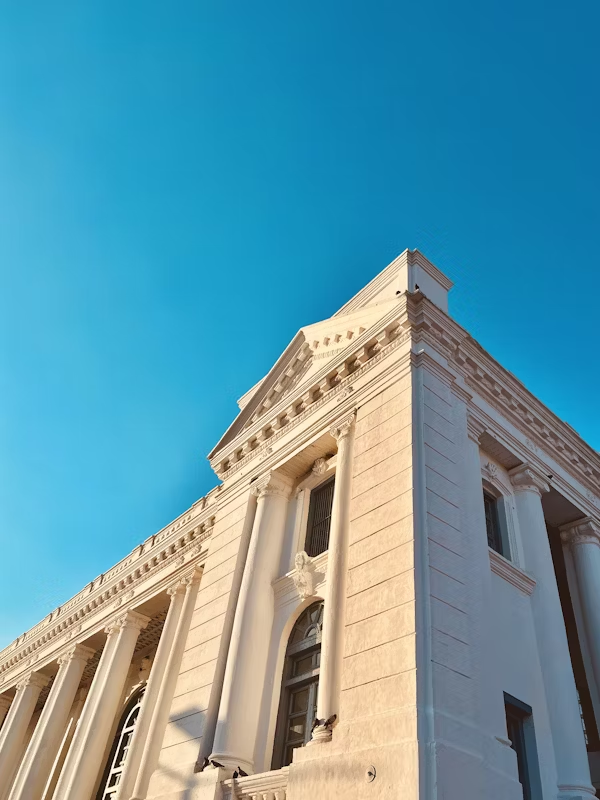
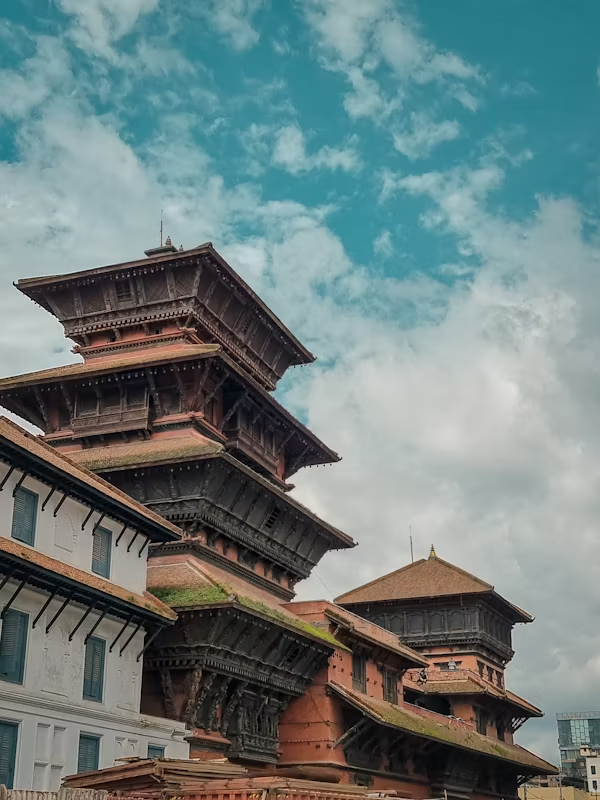
Kumari
One of the best experiences here is watching the Kumari, a little girl chosen to live as a divine power. On special days, she appears through the richly ornamented window to bless the public—a tradition that the Nepali Hindu-Buddhist community has followed with great respect for centuries. The Newar craftsmen built the structures with exquisite skill—multi-tiered pagodas, lion statues, and guardian deities carved into the wooden beams. Each edifice tells a story, from the goddess of Taleju Temple to the courtyard where kings once ruled. Busy bazaars surround the square, making it a place where history meets everyday life. Whether you come as a pilgrim or a photographer, this space’s magic leaves an unforgettable impression.
Not many visitors leave this place with just a photograph; they develop an undying appreciation for Nepal’s royal and spiritual history through the experience. The place invites slow exploration—you might turn a corner and discover a shrine, witness a small ceremony, or hear an elder share his tales. Restoration has preserved its soul rather than stripping away authenticity. When the sunset falls across the square, time seems to pause for a moment. In that stillness, Kathmandu’s history reveals its ancient secrets to those who listen. This place truly represents the very heart of old Nepal.
2. Bhaktapur Durbar Square
Bhaktapur Durbar Square is perhaps the best example of medieval art and architecture. The name “Bhaktapur” means “City of Devotees” and reflects its profound history and spirituality. This rich heritage attracts visitors from around the world.Stone lions guard ancient temples, and artisans still craft pots and wood in the same way their ancestors did. The 55-Window Palace, with its iconic wood works that remain so today, shows how much the Malla dynasty loved beauty and detail. Every alley leads to another wonder: this could be Nyatapola Temple, rising to five stories, or the multiplying underclouds reflected off the Golden Gate. It is a solemn place where tourists and locals alike seem to reverberate as if with sacred ground.
Dattatreya Square
Bhaktapur’s architecture has its own language—expressive, symbolic, and harmonious. The nearby Dattatreya Square leads even deeper into the legacy of Bhaktapur, in which shrines and museums keep antiques from weapons to palm-leaf manuscripts. The city of Bhaktapur, unlike static monuments, is a living entity; its temples ring daily with worship while children and artisans hammer fill the streets. Cultural festivals such as the Bisket Jatra turn the square into a spectacle of chariot-pulling and celebration. This is what makes it so vibrant.
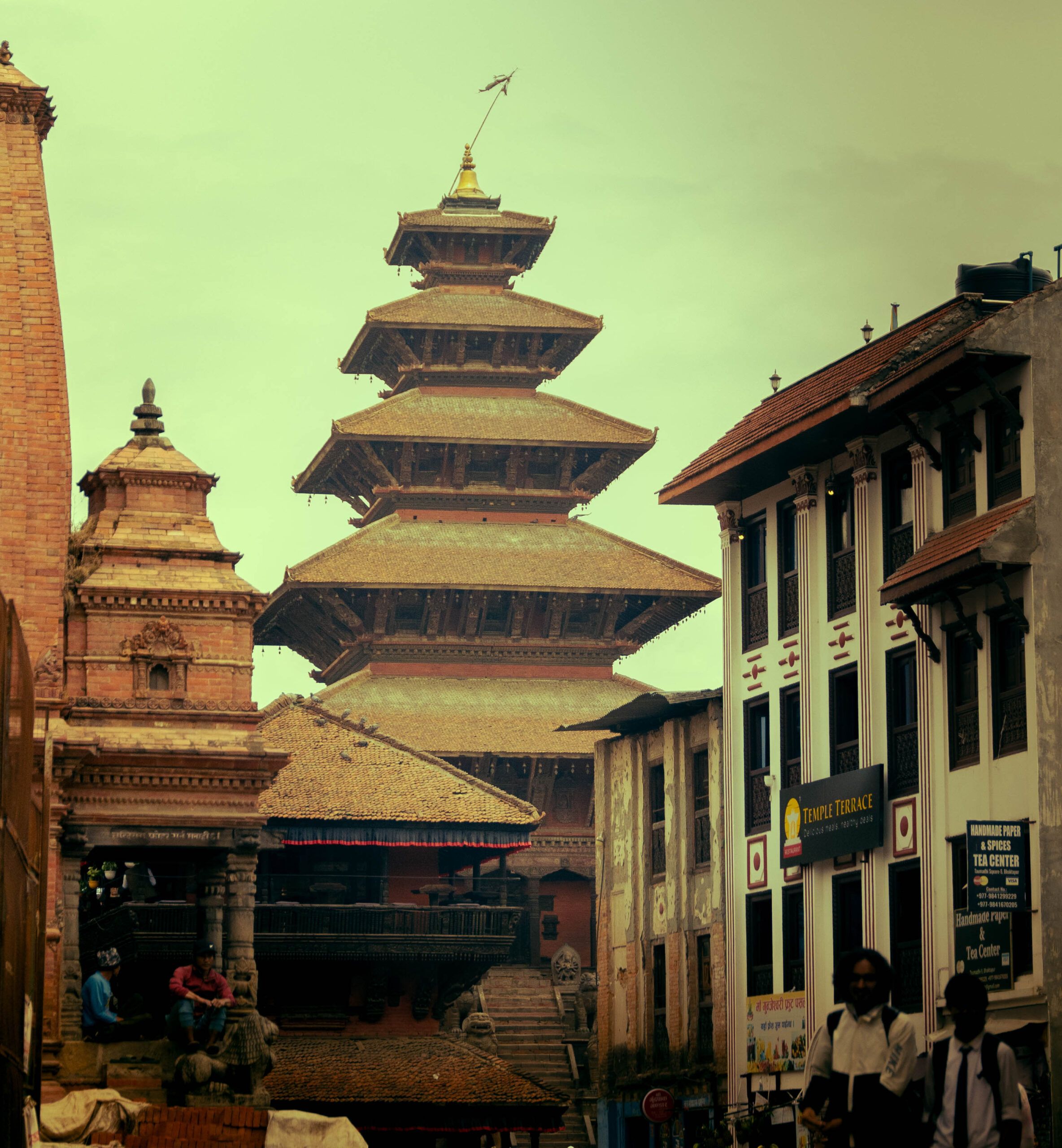
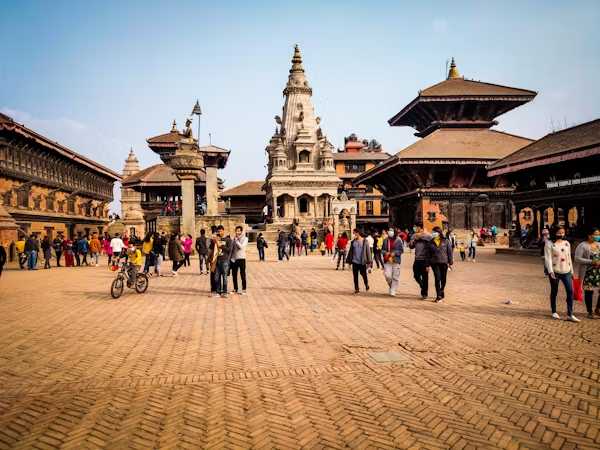
Bhaktapur is an ideal place to visit for a perfect blend between art and environment. The community here would rather retain its identity than restore it as just their personal effort. And even the entrance fees go towards the preservation fund, the visitors find that what they are really underwriting is lifestyle quite distinct from mere architecture. One can spend an entire day perhaps just wandering through its layered beauty. Bhaktapur doesn’t only show you history but allows you to walk inside that history. And as you go, part of your heart stays behind, tucked in ancient bricks and warm smiles.
3. Swayambhunath Stupa (Monkey Temple): Where Faith Meets the Sky
Swayambhunath Stupa sits atop a hill above Kathmandu as one of Nepal’s oldest sacred Buddhist sites. Its enormous white dome, topped by a gilded spire, glistens in the sunlight. Giant painted Buddha eyes on the dome symbolize Nepal’s rich heritage. Locals call it “Swayambhu,” while visitors know it as the “Monkey Temple.” Many monkeys roam freely around its steps and trees. According to legend, a lotus bloomed on the hill when the valley was once a lake. Climbing 365 stone steps becomes a spiritual and physical journey. The climb rewards visitors with stunning panoramic views of Kathmandu Valley. Prayer flags flutter in the wind as worshippers spin prayer wheels. Time seems to lose meaning in this sacred place.
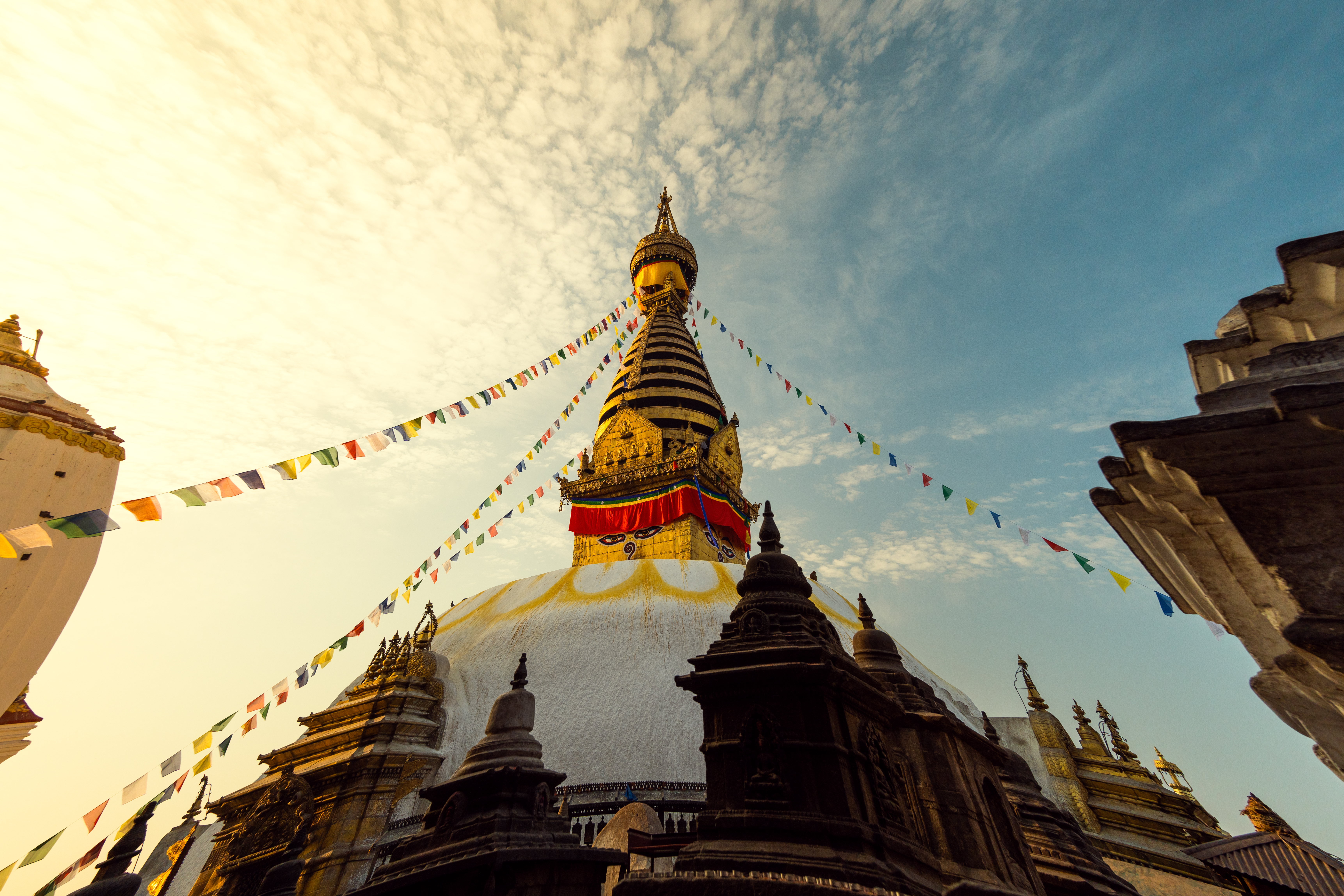

This site serves as an active place of worship for both Buddhists and Hindus living peacefully together. Small shrines, statues, and a monastery surround the stupa, creating a sacred atmosphere full of devotion. Pilgrims circumambulate the stupa clockwise, chanting mantras and offering butter lamps and incense to the air. Playful monkeys roam freely here, acting naughty but still revered as sacred beings. Bells ring, monks chant, and prayer flags whisper in the wind throughout the place. This spiritual symphony draws visitors deeply into its calming rhythm.
Visiting Swayambhunath is an experience of soul rather than just another tourist destination. Spiritual or not, the tranquil aura of the site leaves an eternal trace on any individual. The sunrise or sunset view from this hill is magical, with the golden light bathing the stupa. You somehow feel close to the divine, close to history, and close to yourself. People welcome questions here and politely answer them. Swayambhunath stands in the stillness amidst the chaos.
4. Lumbini: The Sacred Birthplace of Buddha
Lumbini attracts many visitors in the Terai plains of southern Nepal and holds great importance for Buddhists as Siddhartha Gautama’s birthplace. However, it is not just a pilgrim site but also a universal symbol for peace, wisdom, and spiritual awakening. The heart of Lumbini is the Maya Devi Temple, said to mark the exact spot where Queen Maya Devi gave birth over 2600 years ago.
The sacred pond where she used to bathe and the Ashoka Pillar erected by the Indian Emperor Ashoka are other historic elements of the site. Serenity and meditation shine abundantly in the manicured gardens, with the monasteries built by Buddhist communities across the globe, all creating the kind of environment that would allow one to feel like stepping into a living prayer.
International Monastic Zone
What another interesting feature of Lumbini is its International Monastic Zone, where not only Thailand, but also Japan, China, and Germany have monasteries built in forms and styles very true to their conceptualization of Buddhist architecture: each is a magnificent example-from complex Tibetan stupas to minimalist Zen temples-and joined in here form an international village of faith.
The whole area is free from automobiles, designed especially for walking or cycling, inducing to function in the slowing down-reflecting terms. Butter lamps make soft flickering sounds, chants are from monks in silence as only birdsongs or the breeze around Bodhi trees disturb occasional quietness. This is more of a getaway from the rush of everyday life. People oftentimes spend hours beside the ponds or under trees soaking up this refreshing energy.
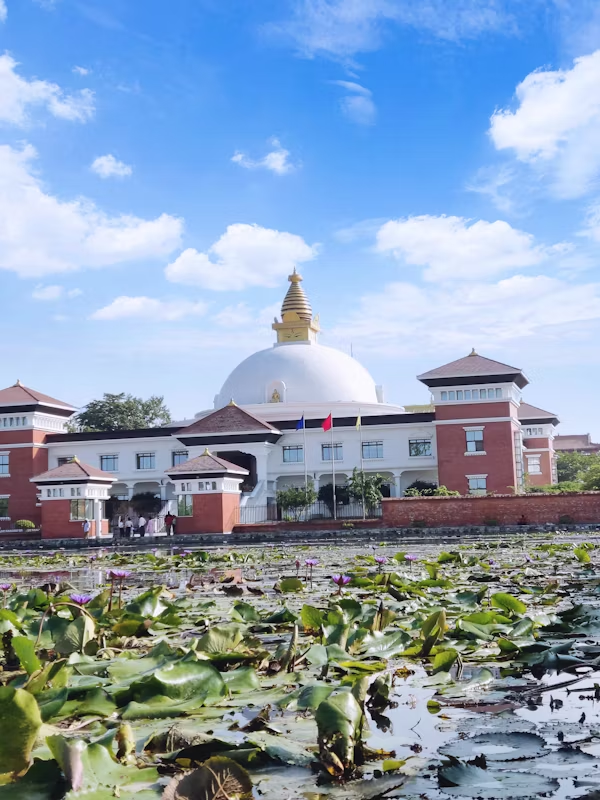
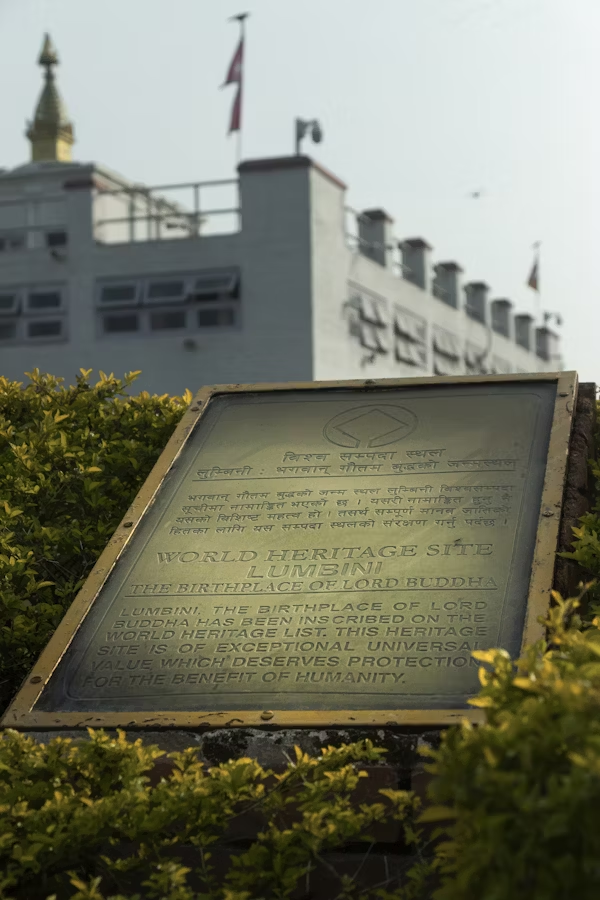
Lumbini is not for show; it is for silence. It urges you to cease, to breathe, to ponder the deeper truth. Whether a believer in the Buddhist faith or just someone in quest of peace, this place speaks to the soul. It is a UNESCO World Heritage Site, but more than that, it is an international symbol of compassion. Every corner says that greatness can come from the humblest of places. And upon this sacred ground does history take its birth with hope.
5. Patan Durbar Square: The Cradle of Newar Artistry
The city of Patan, known as Lalitpur, is one of the three ancient royal cities in the Kathmandu Valley, and Durbar Square represents the celebration of Newari culture and architecture. Unlike Durbar Square in Kathmandu, Patan’s looks modestly refined yet compact and artistically richer; the temples have their unique charm—carved, symmetrical, and very much spiritual.
The stone Krishna Mandir lavishly decorated with alabaster carvings depicting scenes of the Mahabharata finds grace in itself. The Patan Museum located in the Royal Palace compound could be regarded as one of the best in all of South Asia for its collection of sacred arts. The square is like an open-air classroom for the curious soul wanting to know about everything concerning the history, religion, and design of Nepal.
Beauty of Patan
For a long time, Patan has served as a center for metalwork, wooden carving, and stone sculpting. These crafts still speak through Patan’s narrow lanes and busy courtyards. The city showcases craftsmanship and processes behind many artifacts used in rituals today. People gather around temples, lighting butter lamps and whispering prayers. Artisans carve small statues and cast bronze bells using the lost-wax method. The area radiates lived-in beauty, where every brick and beam tells history. You might encounter a festival or hear music in a quiet square. Here, tradition doesn’t stay behind glass—it breathes openly.
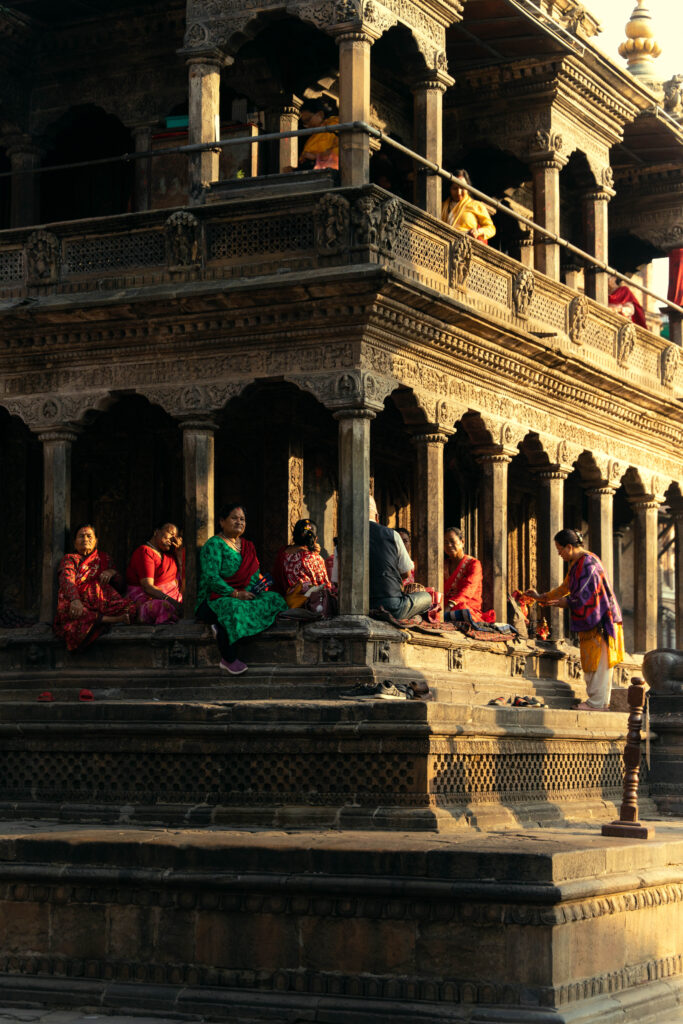
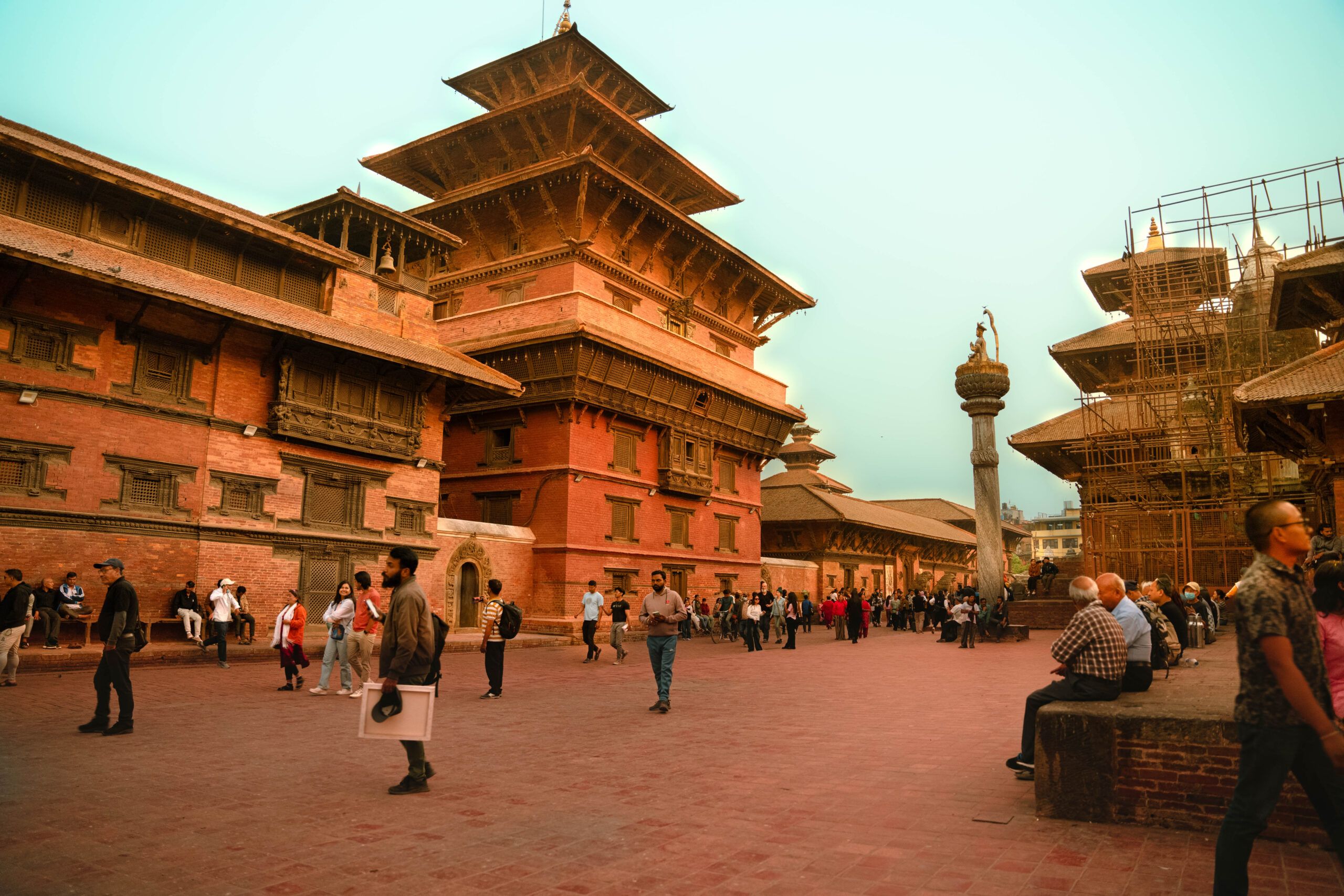
Visiting the squares of Patan Durbar, is really like walking through a gallery where art has never ceased to be made. An atmosphere of pride pervades every corner, not only in the built but also in what keeps alive being created. Co-must of a visit to the people who want to feel the real soul of Nepalese heritage. As old as the buildings are, the ambience is young and vibrant. It will remain in memory, a long after leaving, like the smell of incense after prayer.
6. Pashupatinath Temple: Sacred Ground of Life and Death
The Bagmati River runs alongside Pashupatinath Temple and ranks among the holiest Hindu sites dedicated to Lord Shiva. This site acts as a cosmic stage where life, death, and devotion unfold daily. The main temple, with its golden roof, remains closed to non-Hindus. Ancient shrines, cremation ghats, sadhus, and pilgrims fill the surrounding area. The aura feels surreal, with sandalwood scents, ringing bells, and chanting mantras in the air. Watching funeral rites here humbles visitors deeply as ashes return to the holy river. People here don’t fear death; they honor it as a sacred passage.

Pashupatinath forms a huge complex rich with history, mythology, and regional spirituality. People believe it has existed since 400 A.D. Thousands gather during festivals, especially Maha Shivaratri, filling the temple with music and offerings. Photographers capture sadhus in colorful robes meditating or offering blessings. Monkeys leap through trees and rooftops, adding playful contrast to solemn rituals. Visitors find peace on forest trails and in meditation caves nearby. This place shows striking contrasts—noisy yet quiet, crowded yet personal.
It is visiting Pashupatinath that one comes face to face with soul-stirring acceptance of death. Every creature should visit this shrine while alive; it reminds us that all is transitory, yet all connects.The energy of this place will remain with you, whether as a believer or simply as a respectful observer. It teaches the lesson that spirituality is not peaceful; it is sometimes raw, very much real-and right in front of you. And within its sacred smoke and ancient chants, you might just find a deeper sense of true living. Pashupatinath leaves no heart untouched.
7. Changu Narayan Temple: The Oldest Temple in Nepal
Changu Narayan, located on a serene hill above Bhaktapur, stands as Nepal’s oldest Hindu temple, built in the 4th century. Devotees dedicate the temple to Lord Vishnu, honoring it deeply in Nepali history. Ancient stone sculptures carefully surround the temple courtyard, filled with rich symbolic meanings. Many sculptures rank as masterpieces of Licchavi-era art, making Changu Narayan a sacred archaeological treasure. The temple’s atmosphere remains tranquil and pious, away from tourist crowds. Visitors who climb to the temple enjoy views of hills and villages as rewarding as the heritage itself.
Changu Narayan is special not only because of its antiquity but also in the sense that it remains authentic. The temple makes one feel somehow personal, instead of bustling crowds or other commercial noises, and could find a place in a bygone era. The temple builders followed a conventional two-tiered pagoda style, richly incorporating doors, struts, and statues that have endured over time. Local caretakers and priests give their heart and soul in worship and cleanliness. The temple is also a UNESCO World Heritage Site for culture and architecture. Further, visiting the adjoining museum broadens the spectrum of cognition, as it gives context to the incredible art around you.
For travelers who prefer depth to drama, Changu Narayan is really an oasis. It has a history that is much more subdued than boisterous. You exit almost as though you had found a secret barely visible to many eyes. Sometimes, the whisperings of quiet places can tell the loudest stories. It is here that the spiritual and artistic inheritance of Nepal is most beautifully frozen in time. And even as you walk down the hill, Changu Narayan’s grace continues to accompany you.

Conclusion
In Conclusion, more than just tourist attractions, Nepal’s historical landmarks serve as portals into the soul of a nation. Each site, with its own story, conveys an embrace of history, art, faith, and identity that is as poetic as it is powerful. From the gilded hilltop of Swayambhunath to the tranquil setting of Lumbini, from royal palaces to living temples, these landmarks bear testimony to the resilience and richness of Nepalese culture. Visiting them is not merely about gazing at stone and structure but throbbing with the pulse beat of centuries gone. Whether you are a spiritual seeker or an impervious historian or just an interested traveler, these places promise to move and inspire you.

